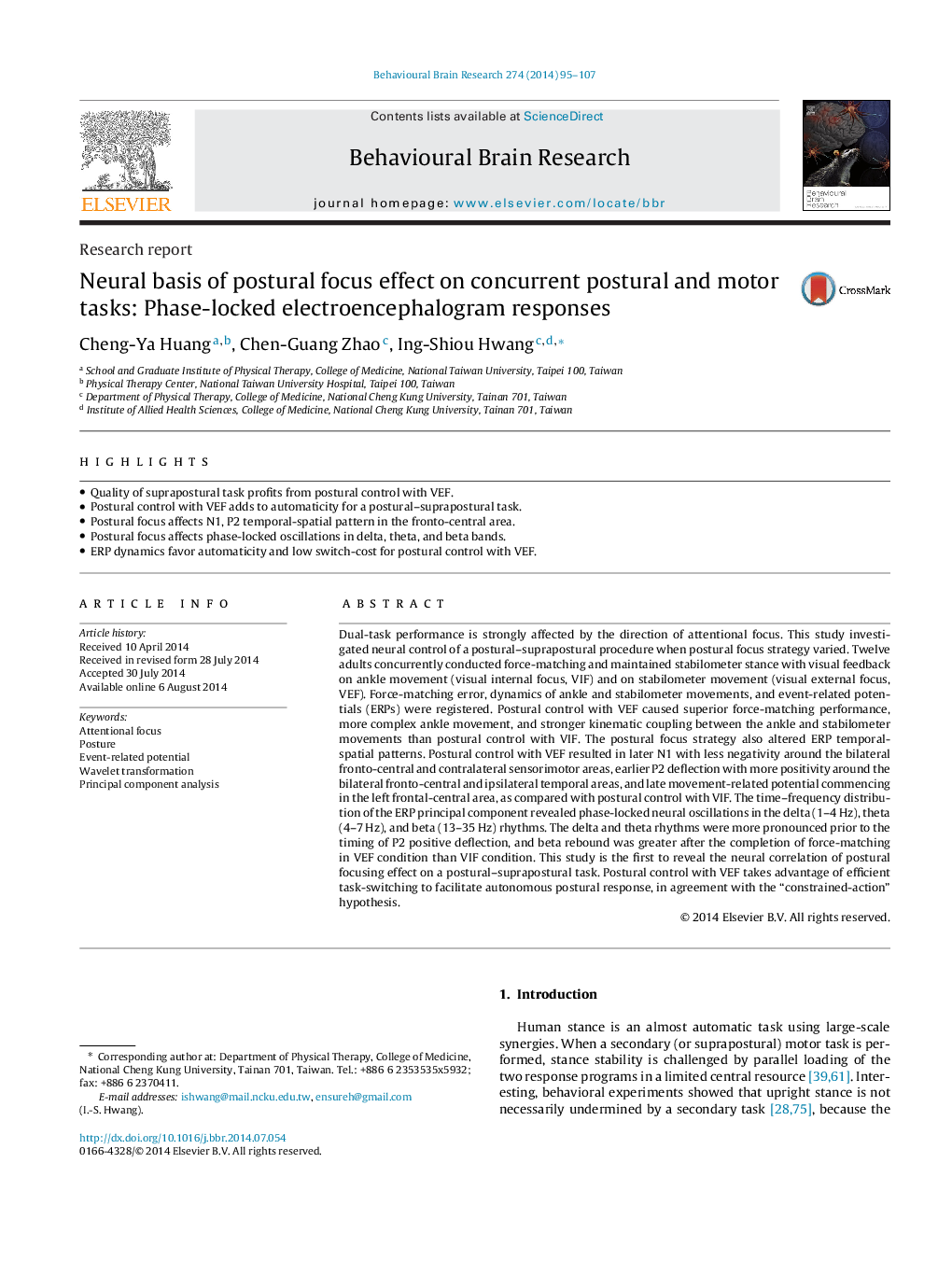| کد مقاله | کد نشریه | سال انتشار | مقاله انگلیسی | نسخه تمام متن |
|---|---|---|---|---|
| 6257718 | 1612958 | 2014 | 13 صفحه PDF | دانلود رایگان |
- Quality of suprapostural task profits from postural control with VEF.
- Postural control with VEF adds to automaticity for a postural-suprapostural task.
- Postural focus affects N1, P2 temporal-spatial pattern in the fronto-central area.
- Postural focus affects phase-locked oscillations in delta, theta, and beta bands.
- ERP dynamics favor automaticity and low switch-cost for postural control with VEF.
Dual-task performance is strongly affected by the direction of attentional focus. This study investigated neural control of a postural-suprapostural procedure when postural focus strategy varied. Twelve adults concurrently conducted force-matching and maintained stabilometer stance with visual feedback on ankle movement (visual internal focus, VIF) and on stabilometer movement (visual external focus, VEF). Force-matching error, dynamics of ankle and stabilometer movements, and event-related potentials (ERPs) were registered. Postural control with VEF caused superior force-matching performance, more complex ankle movement, and stronger kinematic coupling between the ankle and stabilometer movements than postural control with VIF. The postural focus strategy also altered ERP temporal-spatial patterns. Postural control with VEF resulted in later N1 with less negativity around the bilateral fronto-central and contralateral sensorimotor areas, earlier P2 deflection with more positivity around the bilateral fronto-central and ipsilateral temporal areas, and late movement-related potential commencing in the left frontal-central area, as compared with postural control with VIF. The time-frequency distribution of the ERP principal component revealed phase-locked neural oscillations in the delta (1-4Â Hz), theta (4-7Â Hz), and beta (13-35Â Hz) rhythms. The delta and theta rhythms were more pronounced prior to the timing of P2 positive deflection, and beta rebound was greater after the completion of force-matching in VEF condition than VIF condition. This study is the first to reveal the neural correlation of postural focusing effect on a postural-suprapostural task. Postural control with VEF takes advantage of efficient task-switching to facilitate autonomous postural response, in agreement with the “constrained-action” hypothesis.
Journal: Behavioural Brain Research - Volume 274, 1 November 2014, Pages 95-107
